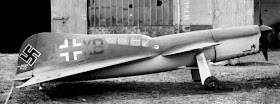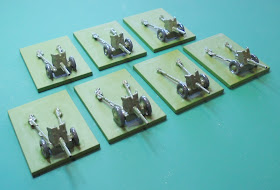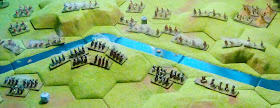Since the last blog entry I wrote about my Operation Barbarossa campaign map, I have discovered a better map of the Russian railway system. Furthermore, the map showed more accurate information about the various marshes and forests in western Russia.
After giving it some thought, I decided not to try to make changes to my existing map, but to start afresh. Thanks to the lessons I learned drawing my original map, this second map took me less time to produce.
My original map looked like this ...
... and my new map looks like this.
I am much happier with the second map, and hope to add some more detail as and when I can. I’ve also developed a standard map key and symbols that I can use in any future maps that I draw.
After giving it some thought, I decided not to try to make changes to my existing map, but to start afresh. Thanks to the lessons I learned drawing my original map, this second map took me less time to produce.
My original map looked like this ...
... and my new map looks like this.
I am much happier with the second map, and hope to add some more detail as and when I can. I’ve also developed a standard map key and symbols that I can use in any future maps that I draw.


















































